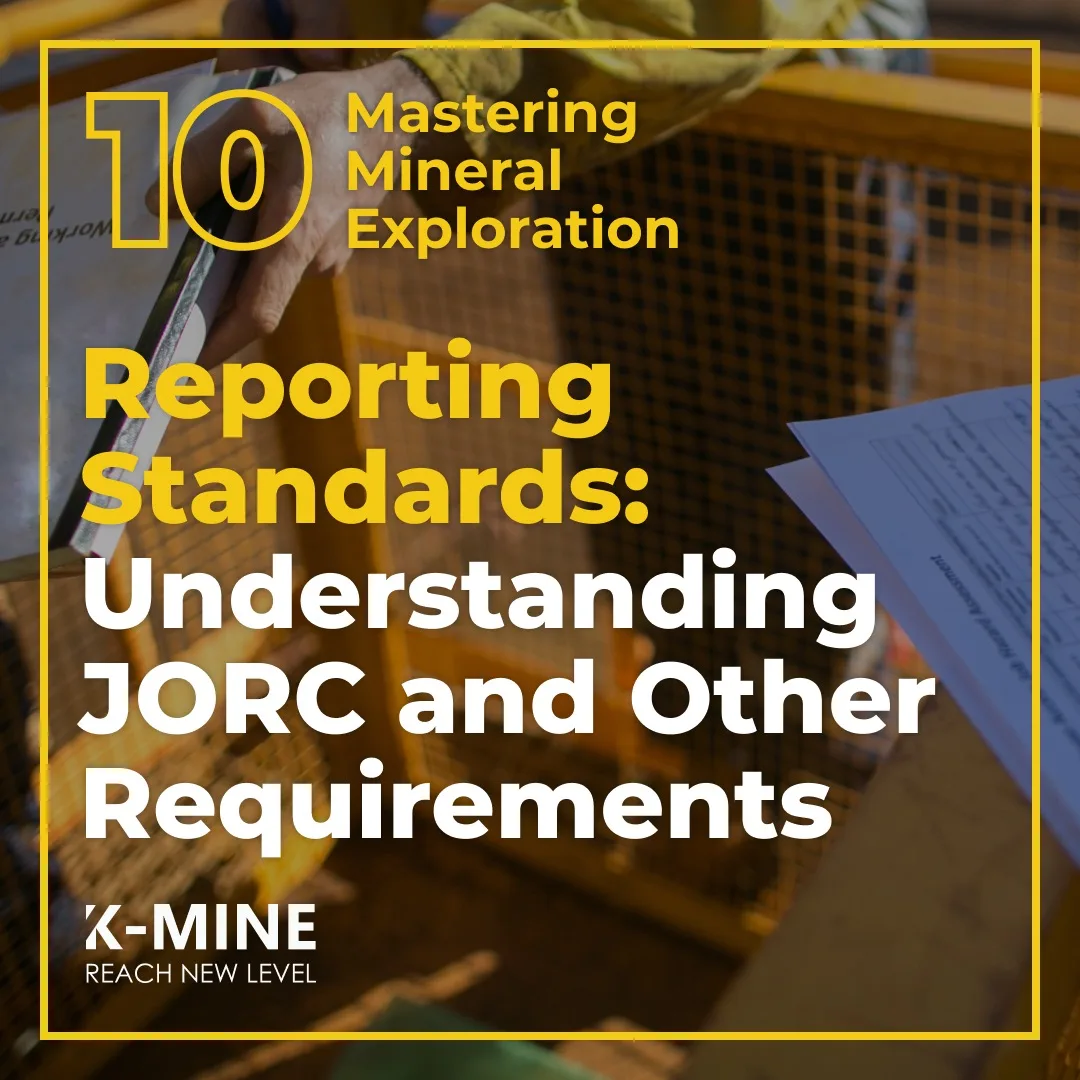
Content
Welcome to the tenth part of our ‘Mastering Mineral Exploration’ series, where we delve into the crucial topic of reporting standards like the JORC Code in the mining industry. Reporting standards play a pivotal role in the mining industry, providing a transparent and universally understood framework for reporting exploration results, mineral resources, and ore reserves.
With the enormity of investments in mineral exploration projects and the accompanying risks, clear and consistent reporting standards are the lifeblood of informed decision-making. In this article, we will explore the importance of these standards, their key requirements, and their overall impact on the mining industry. Let’s embark on this journey to understand the very structures that underpin trust, transparency, and professionalism in mineral exploration and reporting.
Why Reporting Standards?
Reporting standards in the mining industry serve as the keystone of responsible communication and representation of exploration results, mineral resources, and mineral reserves. With billions of dollars at stake, it’s crucial to maintain high levels of transparency and consistency in the information shared with investors, stakeholders, and the public.
Firstly, reporting standards like the JORC Code ensure transparency. By setting precise guidelines on what and how information should be disclosed, these standards ensure that stakeholders have access to comprehensive and relevant information about mineral projects. They lay out the groundwork for what must be included in public reports, including exploration data, sampling methods, estimation methodologies, and more. This transparency allows all parties involved to make well-informed decisions.
Secondly, these standards promote consistency. With different projects, companies, and geographies, there can be a plethora of ways to measure and report exploration results and mineral resources. Reporting standards provide a consistent framework, ensuring that data from different sources can be compared like-for-like, creating a level playing field in the industry.
Lastly, these standards instill confidence among investors and stakeholders. By adhering to a set of internationally recognized rules, companies demonstrate their commitment to best practices and ethical conduct. This, in turn, fosters trust, which is crucial for attracting and maintaining investment in the industry.
In essence, reporting standards aren’t just guidelines – they are pillars of trust, professionalism, and ethical conduct in the mining industry.
Overview of the JORC Code
The Joint Ore Reserves Committee (JORC) Code is a professional code of practice that sets minimum standards for the public reporting of minerals exploration results, mineral resources, and ore reserves. It was established in 1989 and is managed by the Joint Ore Reserves Committee of the Australasian Institute of Mining and Metallurgy, Australian Institute of Geoscientists, and Minerals Council of Australia (JORC).
The primary goal of the JORC Code is to ensure that information about a company’s mineral resources and reserves is presented accurately and unambiguously to stakeholders. It is designed to give everyone involved in the mining industry or investing in it, from shareholders to analysts, access to the same quality and quantity of information.
Three principles are central to the JORC Code, often referred to as the “JORC Principles”: Transparency, Materiality, and Competence.
- Transparency: The information provided should be clear, concise, and effective in conveying the conclusions drawn from the data. Any assumptions, methods, or findings that might influence a stakeholder’s understanding of the report must be disclosed.
- Materiality: The information included in the report should be of sufficient importance to influence decision-making. Any information that could influence an investor’s decision to invest should be disclosed.
- Competence: The people responsible for preparing the report should have adequate knowledge and experience in the relevant fields. The JORC Code requires that a ‘Competent Person’ oversees the production of the report.
Understanding the JORC Code and its principles is crucial for anyone involved in mineral exploration and mining, as they form the bedrock of ethical and responsible reporting in the industry.
JORC Code – Key Requirements
The JORC Code establishes a set of comprehensive guidelines to govern the reporting of exploration results, mineral resources, and ore reserves. The code is designed to ensure that these reports are presented in a manner that is both informative and transparent, promoting confidence among investors and stakeholders. Below are some of the key requirements:
- Competent Person: One of the core stipulations of the JORC Code is the requirement for a ‘Competent Person’ to oversee the preparation and release of public reports relating to a company’s exploration results, mineral resources, and ore reserves. The Competent Person must have a minimum of five years’ experience working with the type of mineral or deposit under consideration. This requirement ensures that the person overseeing the report is suitably qualified and experienced to understand and effectively communicate the complexities and uncertainties that can be associated with mineral resources and reserves.
- Classification of Resources and Reserves: The JORC Code provides a detailed framework for classifying resources and reserves, with each category reflecting a different level of geological confidence and economic viability. Resources are categorized as Inferred, Indicated, or Measured based on the level of geological evidence and confidence, while reserves are categorized as Probable or Proven based on the viability of economic extraction.
- Public Reporting: The JORC Code sets out specific guidelines for how exploration results, mineral resources, and ore reserves should be reported to the public. The aim is to ensure that the reported information is not only accurate but also presented in a manner that can be readily understood by non-specialist investors and stakeholders.
Understanding these requirements is essential for anyone involved in the mining industry, as adherence to the JORC Code is not just good practice – it’s a legal requirement for companies listed on many of the world’s major stock exchanges.
Other Reporting Standards – NI 43-101, SAMREC
While the JORC Code is widely accepted and utilized globally, there are other key reporting standards used in different parts of the world that have their own specific requirements. Two such standards are the National Instrument 43-101 (NI 43-101) in Canada and the South African Code for the Reporting of Exploration Results, Mineral Resources and Mineral Reserves (SAMREC).
- National Instrument 43-101 (NI 43-101): Introduced by the Canadian Securities Administrators, the NI 43-101 sets the standards for all public disclosure of scientific and technical information concerning mineral projects within Canada. Similar to the JORC Code, it also necessitates the appointment of a ‘Qualified Person’ – akin to the Competent Person in JORC – to oversee and endorse disclosure documents. The NI 43-101 places great emphasis on the importance of safeguarding investors by providing accurate, comprehensive, and reliable information.
- South African Code for the Reporting of Exploration Results, Mineral Resources and Mineral Reserves (SAMREC): The SAMREC Code, used predominantly in South Africa, also strives to ensure transparency, materiality, and competence in the public reporting of exploration results, mineral resources, and mineral reserves. While the categories of classification mirror those of the JORC Code, the SAMREC code uniquely emphasizes the ‘modifying factors,’ which include mining, metallurgical, economic, marketing, legal, environmental, social, and governmental considerations, that should be taken into account when reporting resources and reserves.
Though these codes have regional origins, their influence extends globally due to the international nature of mining investment. While they are similar in many respects – aiming to ensure transparency and maintain investor confidence – differences arise primarily due to the legal and regulatory environments of their regions of origin. Understanding these various codes is paramount for mining professionals working in different jurisdictions and international investors alike.
The Role of Reporting Standards in Resource Estimation
Reporting standards like the JORC Code, NI 43-101, and SAMREC play a pivotal role in shaping the resource estimation process within the mining industry. These codes establish a robust framework and best practices that guide the reporting of exploration results, mineral resources, and mineral reserves. This ensures a consistent and transparent depiction of a project’s potential, providing crucial information to stakeholders such as investors, regulators, and the wider public.
-
- Guidelines for estimation: These standards lay out specific criteria and guidelines for how resource estimations should be conducted. They define the procedures for collecting, analyzing, and interpreting geological information. They also outline how this information should be used to estimate the size, grade, and depth of a mineral deposit. The definitions of inferred, indicated, and measured resources, as well as probable and proven reserves, provide clear guidelines on how to categorize the level of certainty of the estimated resources and reserves.
- Reporting of mineral resources and reserves: The standards provide detailed rules on how to publicly report mineral resources and reserves. These include stipulations on what information must be disclosed, how it should be presented, and who is qualified to verify the data. The concept of ‘Competent Person’ (JORC) or ‘Qualified Person’ (NI 43-101) is an integral part of these standards, ensuring that resource estimates are overseen and endorsed by suitably qualified and experienced professionals.
- Impact on investor confidence: By establishing a consistent methodology for resource estimation and reporting, these standards foster investor confidence. They ensure that companies provide reliable, complete, and transparent information about their mineral projects, enabling investors to make informed decisions.
In essence, reporting standards have a substantial influence on the processes involved in resource estimation. They set the benchmark for best practice and ensure that the economic potential of mineral deposits is presented in a transparent and consistent manner.
Compliance Challenges and Solutions
Compliance with mineral reporting standards, although integral to the mining industry, presents several challenges to companies. However, there are effective solutions available, including specialized mining software, which can greatly aid compliance.
-
-
- Compliance Challenges: One of the main challenges is the complexity of the standards themselves. Codes like JORC, NI 43-101, and SAMREC are comprehensive documents that detail a multitude of technical and ethical requirements for reporting mineral resources and reserves. Ensuring that all these requirements are met can be a daunting task. Additionally, maintaining up-to-date knowledge of these evolving standards and adapting to changes can also pose difficulties.
- Data Management: Another significant challenge lies in data management. These standards require high-quality, transparent, and verifiable data. Managing vast quantities of exploration and operational data, ensuring its quality, and utilizing it to create accurate estimates in line with the codes’ guidelines is a complex process.
- Role of Software: Solutions like K-MINE can help mitigate these challenges. K-MINE is a software tool specifically designed for the mining industry. It aids in managing and analyzing geological data, providing functionalities that support accurate resource estimation. In the context of reporting standards, K-MINE helps ensure that the data used in resource estimates is accurate, verifiable, and transparent, facilitating compliance.
- Compliance Assurance: K-MINE, with its capabilities of data management, 3D modeling, geostatistical analysis, and resource estimation, allows mining companies to generate compliant reports. It ensures that all calculations are based on sound geological principles, providing a systematic and auditable trail for regulators and independent auditors.
-
In conclusion, while compliance with reporting standards is challenging, tools like K-MINE can streamline the process, ensuring that companies can reliably meet these critical industry requirements.
The Future of Reporting Standards
As we look to the future, reporting standards in the mining industry like the JORC Code, NI 43-101, and SAMREC are likely to continue evolving to keep pace with technological advancements and industry best practices.
-
-
- Technological Advancements: Technologies such as Artificial Intelligence (AI) and Machine Learning (ML) are making significant inroads into various sectors, including the mining industry. These technologies can help manage and analyze large volumes of data, facilitating more accurate resource estimations and potentially influencing future changes in reporting standards. For instance, AI and ML might be used to automate the estimation process, ensuring more accurate and faster estimations, thus necessitating amendments in standards to incorporate these novel methodologies.
- Improved Data Analysis: The future could see a greater emphasis on the integration of diverse data sets for resource estimation. As more sophisticated analysis techniques become available, standards may need to evolve to guide their use in mineral resource reporting. This would encompass methods of handling big data, the use of remote sensing technology, and the application of advanced geostatistics.
- Industry Best Practices: Reporting standards are often a reflection of industry best practices. As these best practices evolve, so too will the standards. For instance, there is an increasing emphasis on sustainability and environmental stewardship in the mining industry. Future reporting standards might require more comprehensive disclosure about a company’s environmental impact and sustainability practices.
- Global Harmonization: There is a push towards a more globally harmonized reporting standard, which could result in significant changes in the future. A unified global standard would make comparisons between projects in different jurisdictions more straightforward and increase transparency for investors.
- Transparency and Accountability: The demand for greater transparency and accountability in the mining industry is likely to influence future changes in reporting standards. This could include stricter requirements for disclosure, increased scrutiny of competent persons’ qualifications and ethical standards, and more detailed guidelines for reporting uncertainties in resource estimates.
-
In conclusion, while we cannot predict the exact changes in reporting standards, it’s clear they will continue to evolve to keep pace with technological advancements, industry best practices, and societal expectations.
Conclusion
In the realm of mineral exploration and mining, adherence to reporting standards like the JORC Code, NI 43-101, and SAMREC is not just a statutory requirement but a cornerstone of industry credibility. These standards serve to uphold transparency, consistency, and competence, allowing for a shared language and benchmarks within the industry, and enabling investor confidence.
Throughout the course of this article, we have explored the role and importance of these reporting standards, detailing their key requirements and principles. We delved into the influence these standards exert on resource estimation, a process vital to assessing the economic viability of mining projects. We also discussed the challenges mining companies may face in ensuring compliance, and the potential solutions, such as software like K-MINE, which can facilitate adherence to these standards.
The mining industry’s future landscape will likely witness an evolution of these reporting standards. Influences such as technological advancements, improved data analysis methods, shifts in industry best practices, and the demand for greater transparency and accountability will drive these changes.
In this ever-evolving landscape, the grasp of current practices and a keen eye on future trends is crucial for anyone involved in mineral exploration and mining. To continue our journey through the intricacies of the mining world, our next article will delve into another crucial aspect of mineral exploration. So, stay tuned to uncover more layers in this fascinating field.



 Back
Back